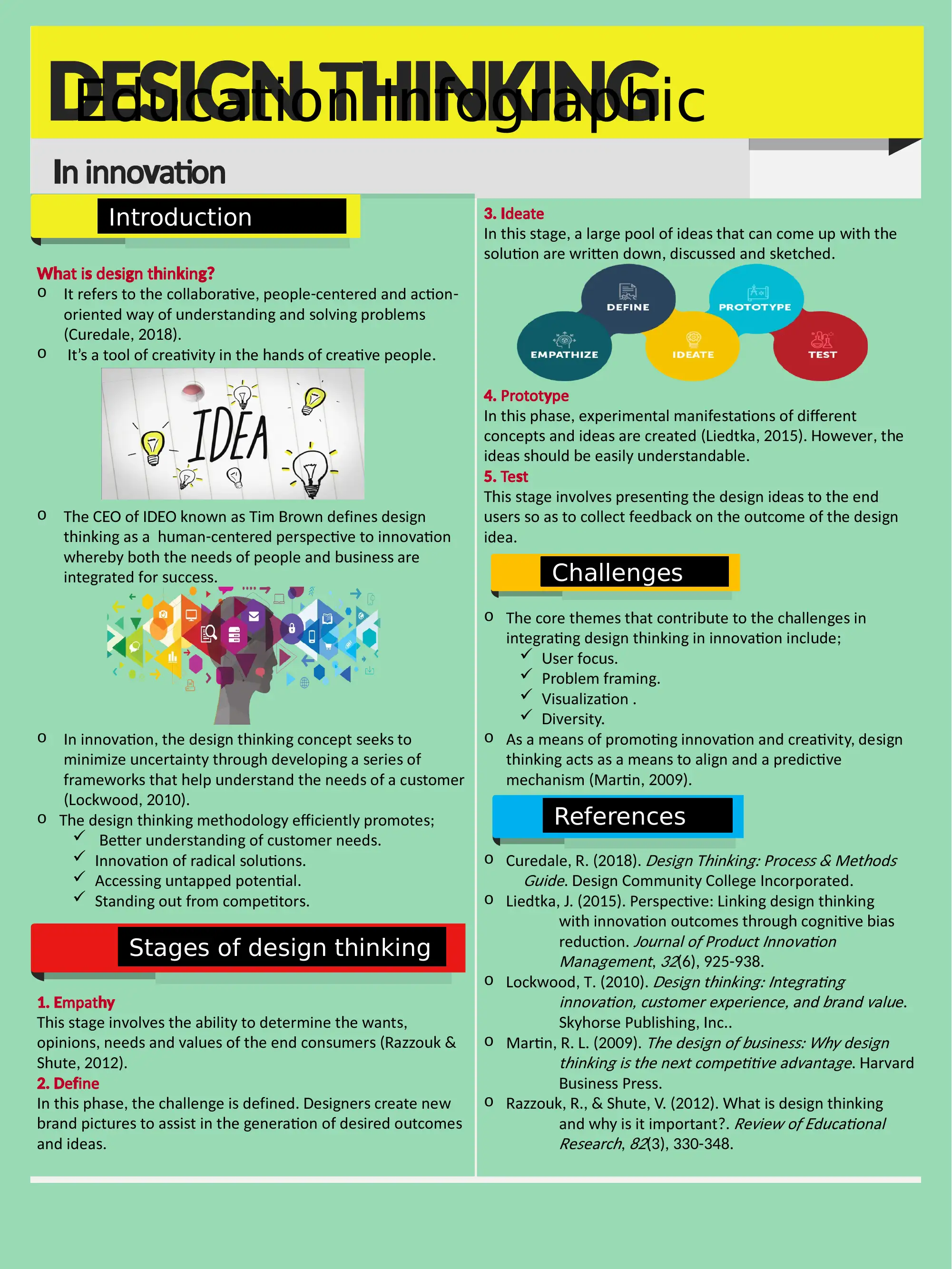Innovation & Design Thinking: Education Infographic Presentation
VerifiedAdded on 2023/06/09
|1
|496
|118
Presentation
AI Summary
This presentation offers an educational infographic on design thinking and its application in innovation. It defines design thinking as a collaborative, people-centered approach to problem-solving, emphasizing the integration of customer needs and business objectives. The presentation outlines the five key stages of design thinking: empathy, define, ideate, prototype, and test, detailing the activities and goals of each stage. It also addresses the challenges in integrating design thinking, such as maintaining user focus, framing problems effectively, visualizing concepts, and fostering diversity. Furthermore, it highlights design thinking's role in promoting innovation, creativity, and better understanding of customer needs. The presentation concludes with a list of references used to support the information presented.



![[object Object]](/_next/static/media/star-bottom.7253800d.svg)